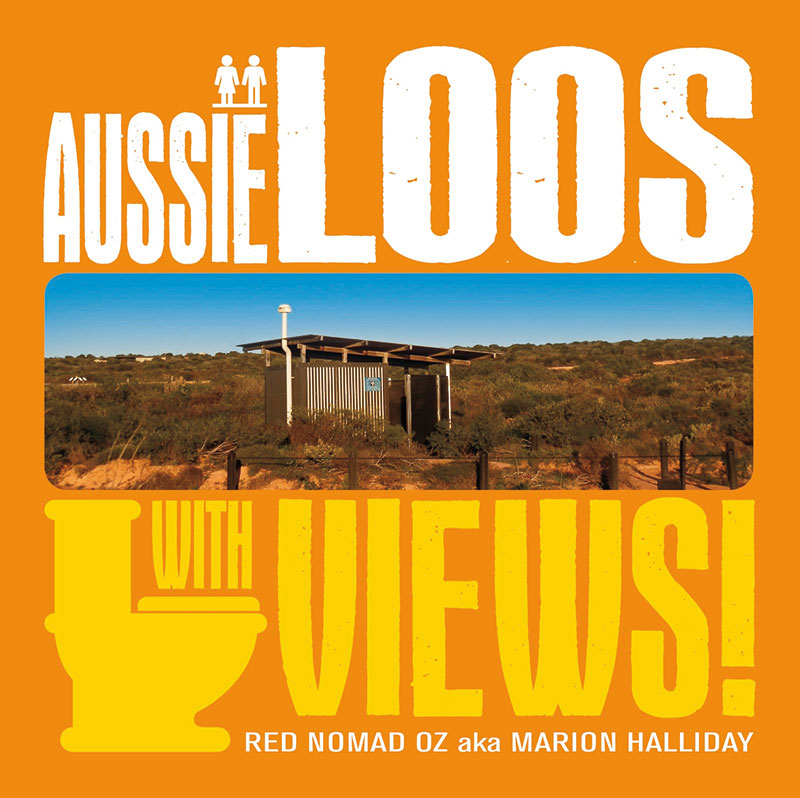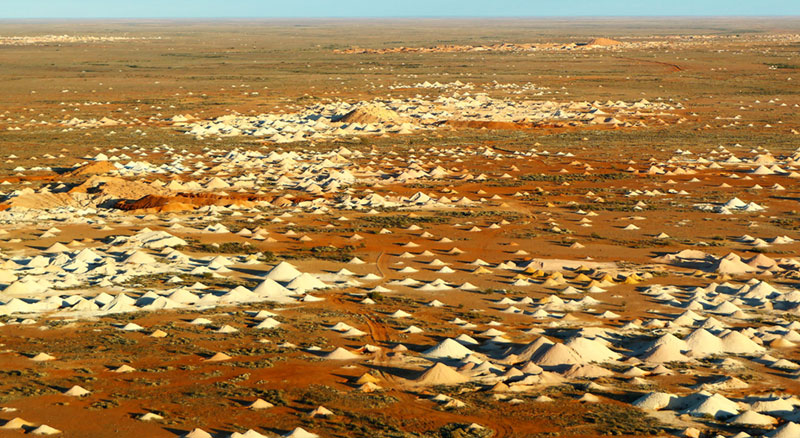
By Marion Halliday, Adelaide, South Australia
Marion is “Red Nomad OZ”, author, blogger and Aussie traveller who loves discovering nature-based attractions and activities – and scenic loos – all over Australia. Her Aussie travel blog and published book “Aussie Loos with Views” provide inspiration for other Aussie explorers.
South Australia isn’t called the driest state of the driest continent on earth for nothing. But just because a lot of South Australia’s 983,482 square kilometres (379,725 miles²) is outback and desert country doesn’t mean there’s nothing to see and do there.
South Australia is so large that only 30 countries on earth are larger. So of course the landscape is wide, open and empty. The sky’s so big and blue by day and ablaze with colour as the sun sinks below the horizon’s flat line that it’ll dominate your photos without even trying. It’s a country of vast plains crisscrossed by (mostly) dry river beds, bisected by a maze of dusty tracks and scattered with unexpected rock formations and sand dunes in impossible colours and shapes.
Exploring the Aussie Outback with Red Nomad OZ
When you look beyond the dust, drought and the endless distances, the scenery is stunning, in a remote Aussie Outback kind of way.
Venture a few hours north of the more popular (and green!) coastal fringe and it will feel like a different universe. Or at the very least, like landing on the moon. Add in a diverse and unexpected collection of state, national and world record holding attractions and this remote part of Australia becomes not just memorable, but magic.

Base yourself right in the middle of all this wide open space where you’ll find Coober Pedy, also known as Opal Capital of the World. About 850 km (530 miles) and a nine hour drive up the Stuart Highway north of state capital Adelaide, it’s surrounded by countless multicoloured ‘mullock’ heaps, rock discarded from the diggings in the never-ending quest for Australia’s national gemstone. Visit the site where teenager Willie Hutchison first discovered opal in 1815 while searching for water, and you’ll wonder how anything could be found in this barren moonscape!

Try your luck “noodling” for a piece of opal in the public fossicking area’s giant mullock heap and you’ll wonder even more. But don’t despair if you don’t get lucky there – finding an opal souvenir in one of the town’s many outlets is a sure thing!
It’s estimated that over 70% of the world’s opal has been extracted from Coober Pedy’s 70 opal fields and countless underground mines, attracting miners and fortune hunters from all around the world. At last count, 45 nationalities were represented in the town’s population of around 2500.
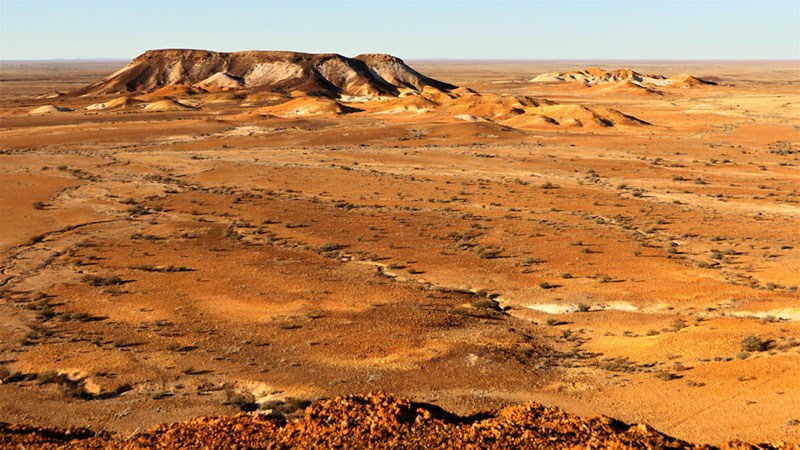
Mining opal doesn’t come easily in this harsh and unforgiving climate where rainfall has been well under the annual average of 138 mm (5.5 inches) for two years in a row, and temperatures regularly top 40° C (104° F) in summer. That’s why you’ll find dwellings (called “dugouts”), churches, accommodation, opal outlets, shops and the world’s only underground campground hacked out of the rock below the surface where the temperature’s a pleasant 24°C (75ºF) all year round.
Living underground is bizarre. For starters, there aren’t any windows so when the lights are off it’s dark. Totally dark. And silent. If you’ve got an overactive imagination, having several tonnes of rock above your head can be unnerving. The pyramid-shaped metal caps atop pipes sticking out of the ground are air vents channelling fresh air into the buildings underground, and stopping rain from dripping underground through the vent.
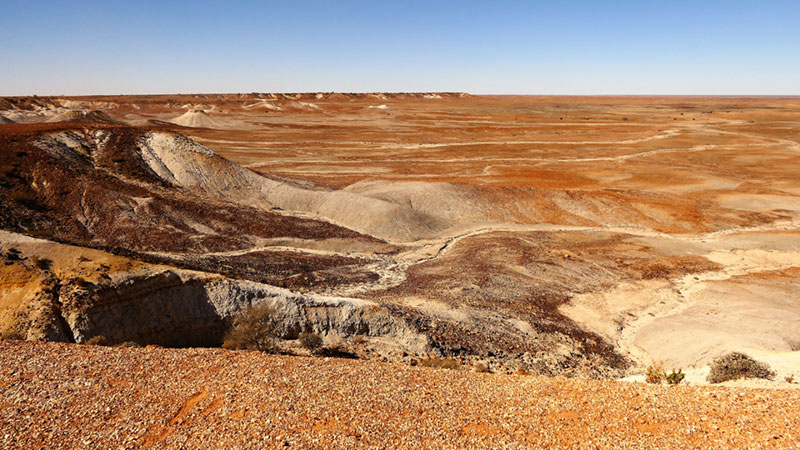
The chances of rain in Coober Pedy on our June 2019 visit were low, with the total year-to-date rainfall only 19.8 mm (0.78 inches), way below average.
Luckily, the desert scenery doesn’t rely on rain to look magnificent, especially 25 km (15.5 miles) north of town at the Kanku-Breakaways Conservation Park, with fantastic rock formations rising out of what was once an ancient sea bed. Drive out there at sunset for amazing light and colours, or take a day trip and drive the 70 km (43.5 mile) loop trail down onto the old sea bed and past the Dog Fence. Built in the 1880’s to keep dingos (Australian wild dogs) from the south-east pastoral area, the fence looks just like any other farm fence-line, but at 5,614 km (1,488 mile) in length, it’s the longest continuous man-made structure in the world.

If you think the Breakaways scenery looks familiar, it’s possible you’ve seen it before. That’s if you’ve watched movies like Mad Max Beyond Thunderdome, Pitch Black, Red Planet, Stark or Ground Zero, all of which were shot around here in a landscape that needs no enhancement to look post-apocalyptic!
Back in Coober Pedy, the Opal Fields golf club, studded with rocks and its ‘greens’ black with machine oil, looks even more post-apocalyptic. But it’s the only club in the world with reciprocal playing rights at the home of golf in Scotland, the 600-year-old St Andrews Golf Club. Too hot to play during the day? No problem! Just tee up with glowing balls when it’s cooler at night – and keep any opal you find!
Coober Pedy’s most impressive natural attraction is just a short distance away (by outback standards), but a very long drive. Kati Thanda-Lake Eyre’s whopping 9,500 square km (3,668 miles²) surface area makes it Australia’s largest lake, and 13th largest in the world. But it doesn’t have water in it every year despite a huge catchment area of 1,140,000 square km – around 15% of Australia’s land mass, and the size of Colombia. On average, the lake has some water in it every three years, a partial fill every 10 years, and a complete fill every 25 years, although the most recent was in 1974-76. It’s also the site of Australia’s lowest natural point – 15.2 metres (49 ft) below sea level.
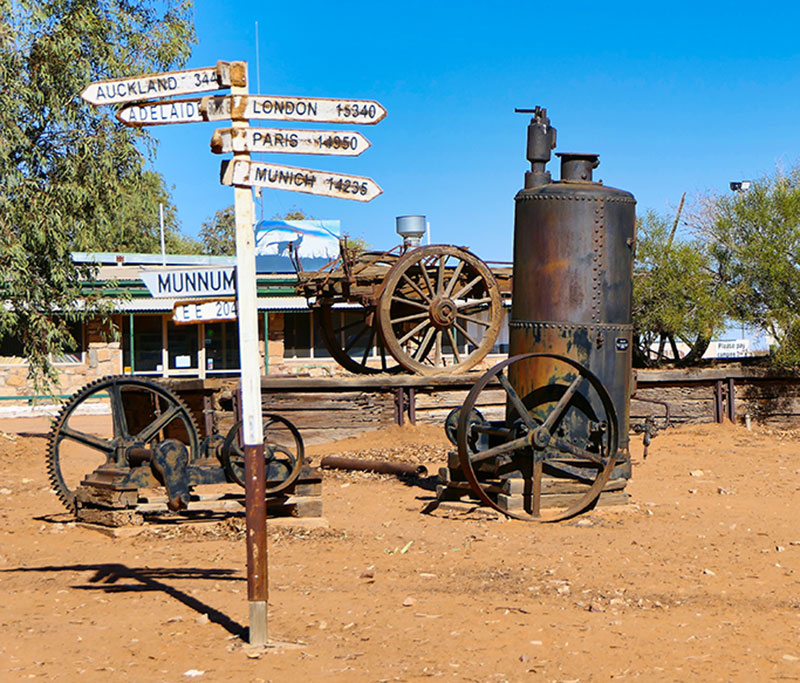
We were in luck on this visit – waters from heavy flooding in northern Queensland earlier in the year are flowing into Lake Eyre North in one of the best events in recent years – it’s not a total fill, but it’ll do! By road, it’s 230 km (143 miles) to the lake’s nearest public access point – and it’s likely to take around 4.5 hours, depending on track conditions. So if you and your rig aren’t up for a rocky, dusty, tyre-shredding drive over rugged roads to see the lake, see it from the air instead on a scenic flight that takes in a lot of the surrounding countryside as well.
Whether or not I can claim to have been to Lake Eyre just by flying over it, it’s a bucket-list experience as arid mountain ranges, river beds, lonely roads, dams and sand dunes pass underneath in a magic carpet of earthy colour offset by the waters of this vast inland sea. And if I don’t hold the record for most photos taken on a Lake Eyre scenic flight, I gave it a red hot go!
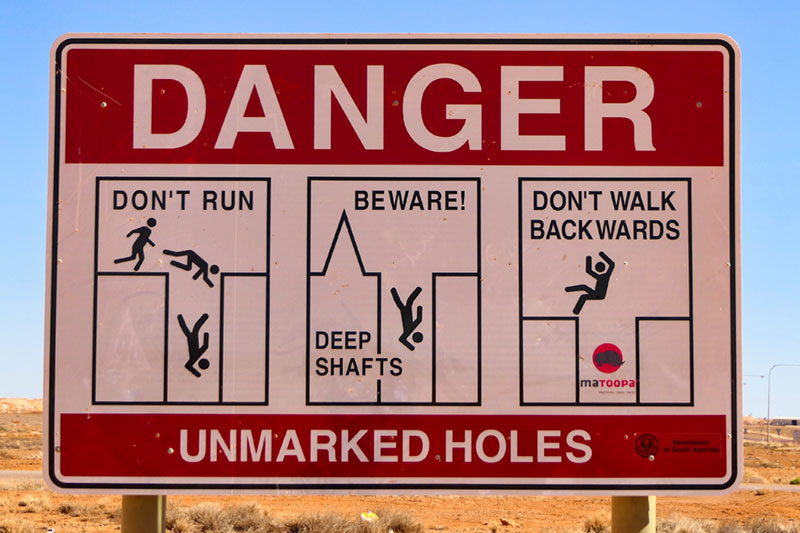
The tiny, remote town of William Creek (6 residents – and a dog!) is the closest point of civilisation to Anna Creek Station, largest working cattle station in the world at over 23,677 square km (9,142 miles²) and bigger than El Salvador. After morning tea in William Creek, we flew back to Coober Pedy from Lake Eyre over the Anna Creek Painted Hills, a panorama streaked with colours direct from the outback palette. Far below, a small plane on the edge of the Hills had just disgorged a group of people for a guided tour, the only way to explore this inaccessible spot from the ground. Next time!
The Painted Desert, third, and arguably most spectacular of the trifecta of exotic rocks in the region, is about 153 km (95 miles) and a 4.5 hour drive north of Coober Pedy. We took the alternative route north for about 150 km (93 miles) up the Stuart Highway to stay at Cadney Park roadhouse and drive the 93 km (58 miles) east to the Painted Desert on a road so rough we took nearly three hours to get there.
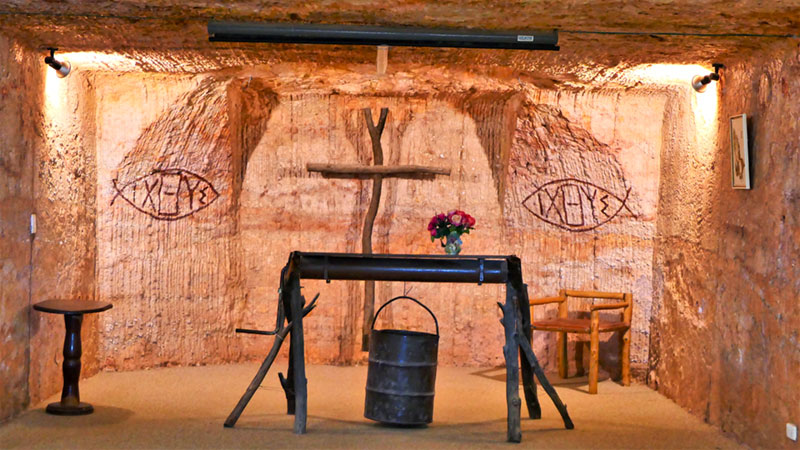
Leave enough time to explore the Painted Desert – vantage points overlook the impressive panorama of eroded rock formations, sweeping plains and roads heading east to Oodnadatta and west to Cadney Homestead. It’s a wild, remote landscape showcasing the Outback’s vast distances and hidden surprises – and also the courage and tenacity it takes to run a station out here. Camp at the Arckaringa Homestead, a few kilometres from the easternmost lookout in the Painted Desert, and return for some stunning sunset shots. It’s a long way to anywhere from here, so check with the locals for the optimum tyre pressure to avoid punctures – it’ll be a lot lower then you think!
Travel during the Australian late winter and early spring (June-September) to avoid the heat – and possibly see the stunning Sturts Desert Pea, South Australia’s state floral emblem.
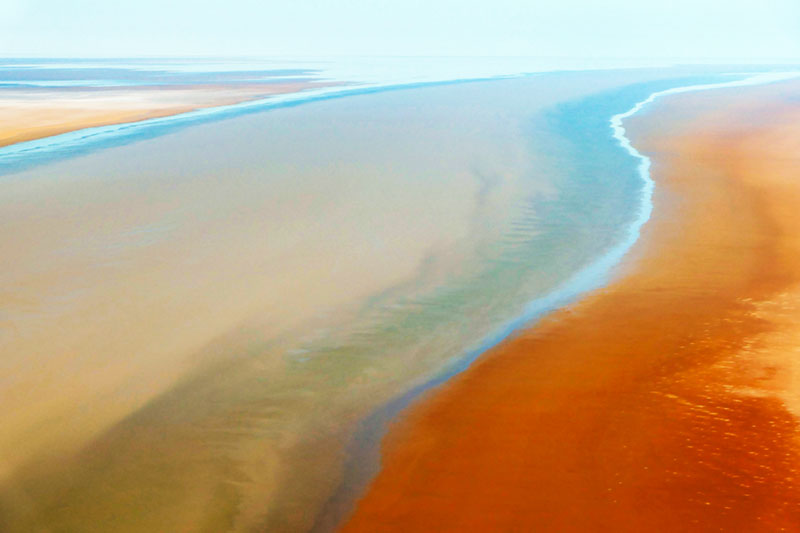
The South Australian outback is full of rewards for intrepid travellers who make the effort to journey deep into its arid lands and far beyond the tourist hot spots.
After experiencing its wide open spaces, quirky towns, outback sunsets, panoramic views and treasures of the earth, you just might find yourself planning your return!
FOLLOW MARION HALLIDAY:
Marion blogs as “Australia by Red Nomad OZ” at www.redzaustralia.com.
▷
Follow Marion @rednomadoz on Twitter, Pinterest, LinkedIn, and Flickr. Facebook: RedzAustralia.
▷
Buy her book: “Aussie Loos with Views!” at Amazon.com and eBay.com.
☛ Read more: Posts by Marion Halliday, the Red Nomad Oz



Marion is “Red Nomad OZ”, author, blogger and Aussie traveller who loves discovering nature-based attractions and activities – and scenic loos – all over Australia. Her Aussie travel blog and published book “Aussie Loos with Views” provide inspiration for other Aussie explorers.

